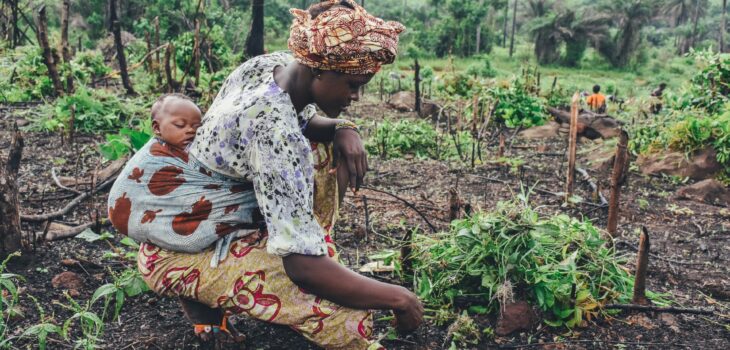
What are the implications of the COVID-19 situation
What are the implications of the COVID-19 situation – now and in the future – for food production, agricultural and fishery/aquaculture supply chains and markets?
The food supply chain is a complex web that involves producers, consumers, agricultural and fishery inputs, processing and storage, transportation and marketing, etc.
At the onset of the crisis, the food supply chains were strained as many countries imposed restrictions on movement of goods and people across and within borders. As a result, the challenge was not availability of food but easy access to it.
Next, anxious over all the uncertainties linked to food supply, some countries restricted food exports, making this situation even more challenging.
These protectionist measures were partly introduced to avoid driving up local food prices as weakening of national currencies made it more advantageous for food producers to export rather than sell domestically. The resulting food price inflation could have had significant consequences – making poverty worse and leading to social and political unrest.
Fortunately, excessive protectionism was avoided and many of the initially imposed restrictions have been removed, with countries adopting overall a restrained and reasonable approach.
Globally, food supply has been adequate, and markets have been stable so far. For example, global cereal stocks are at comfortable levels and the outlook for wheat and other major staple crops for 2020 is positive.
However, disruptions to the food supply chains remain, situations vary, and there are still many unknowns.
Food production:
Although reductions in production of high value commodities (i.e. fruits and vegetables) is already likely, they are not as yet noticeable because of the lockdowns and disruption in the value chain.
In countries already affected by other crises, FAO’s on-the-ground surveys being undertaken indicate that small-scale producers are facing mounting challenges accessing inputs – such as seeds and fertilizers – because of rising prices of these inputs; severely reduced household incomes; and/or lack of availability of these inputs in markets.
While we don’t yet know the extent of these implications on national production, in some countries like in Afghanistan, an FAO survey carried out with the Government anticipates a decrease of over 50 percent of foods such as cereals, fruits, vegetables, and dairy products this year. Over 1300 people across 18 provinces of Afghanistan participated in the survey, including: farmers, traders, processors / milling unit owners, and agricultural staff.
Reduced food production may have serious implications for food availability. If planting is reduced, so too are harvests, which means farming families themselves, often among the most acutely food insecure, as well as their communities, will not be able to access sufficient nutritious food down the line.
Fisheries and aquaculture:
In the fisheries and aquaculture sector, the implications can vary and be quite complex. For wild-capture fisheries, the inability of fishing vessels to operate (due to limited or collapse of market as well as sanitary measures difficult to abide to on board of a vessel) can generate a domino effect throughout the value chains in terms of supply of products, in general, and the availability of specific species. In addition, for wild-capture fisheries and aquaculture, problems in logistics associated with restriction in transportation, border closures, and the reduced demand in restaurants and hotels can generate significant market changes – affecting prices.
Livestock:
The pandemic is impacting on livestock sector due to reduced access to animal feed and slaughterhouses’ diminished capacity (due to logistical constraints and labour shortages) similar to what happened in China.
In countries already affected by other crises, emerging evidence from FAO’s assessments highlights the livestock sector is particularly vulnerable to the effects of the pandemic.
For example, in Zimbabwe, supplies of animal feed have been disrupted by containment measures and feed companies’ inability to access raw materials and staff. In Afghanistan, the nomadic Kuchis have been severely impacted due restricted access to pasture, lack of adequate fodder/feed and increased prices of the same, coupled with diminished access to assured veterinary services. Close to one-third reported that their transhumance was either blocked or limited, resulting in some localized tension.
Transport:
Blockages to transport routes are particularly obstructive for fresh food supply chains and have resulted in increased levels of food loss and waste. Fresh fish and aquatic products, which are highly perishable and therefore need to be sold, processed or stored in a relatively limited time are at particular risk.
Transport restrictions and quarantine measures are likely to impede farmers’ and fishers’ access to markets, curbing their productive capacities and hindering them from selling their produce.
Shortages of labour could disrupt production and processing of food, notably for labour-intensive industries (e.g. high-value crops, meat and fish).
Markets:
The closure of restaurants and street food outlets removes a key market for many producers and processors that may produce a temporary glut or trigger upstream production cuts as can be seen in the fish and meat sectors. In some developing countries, urban supply and demand for fresh produce are both in decline due to restrictions and aversion behaviour by traders and consumers.
The Article credit by FAO